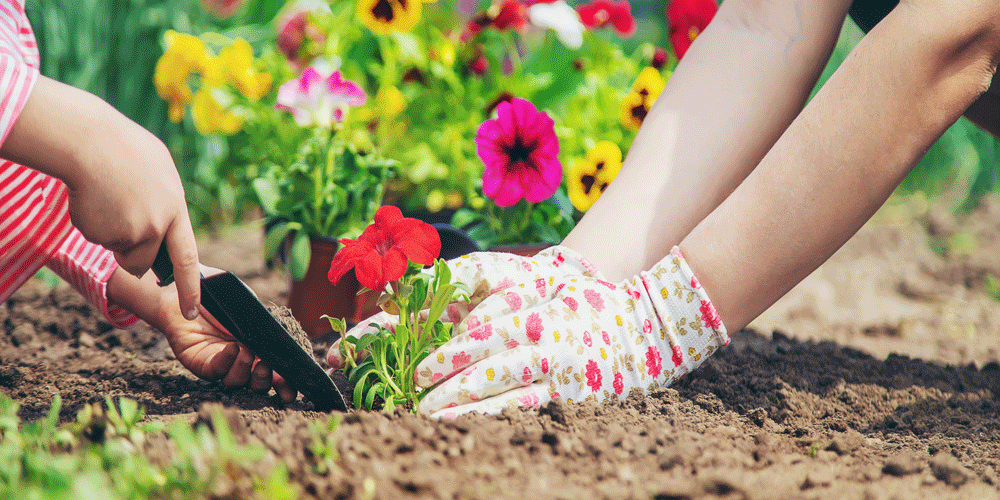Spring is a wonderful season for many reasons, and one of the most exciting is the chance to start planting in your garden. After the long, dark, cold months of winter, it is a delight to see the first signs of new growth and to feel the warmth of the sun on your skin once again. If you’re a gardener, then you know that spring is the perfect time to start getting your garden ready for planting. In this article, we will explore some of the key steps you should take to prepare your garden for planting and get the most out of your spring planting season.
Step 1: Clean up Your Garden Beds
The first step in preparing your garden for planting is to clean up your garden beds. This means removing any debris or dead plants that may have accumulated over the winter months. This will help ensure that your garden beds are ready to receive new plants and will help prevent the spread of any diseases or pests that may have taken hold during the winter.
To clean up your garden beds, start by removing any dead plant material, such as leaves, stems, and branches, that may have accumulated over the winter. This material can be added to a compost pile or bin, where it will break down and become nutrient-rich soil for your garden. Once you have removed all of the dead plant material, use a rake or hoe to loosen and remove any weeds or other debris that may be hiding in the soil.
Step 2: Test Your Soil
Once you have cleaned up your garden beds, it’s important to test your soil to determine its nutrient levels and pH balance. This will help you determine what types of plants will grow best in your soil and what types of fertilizers or soil amendments you may need to add to improve your soil quality.
You can purchase a soil testing kit from your local garden center or online, or you can send a sample of your soil to a soil testing laboratory for a more comprehensive analysis. Soil testing kits typically include instructions for taking soil samples and performing the test, and they will provide you with a report that includes information on your soil’s pH balance, nutrient levels, and other important characteristics.
Step 3: Prepare Your Soil
Once you have tested your soil, it’s time to prepare it for planting. This may involve adding soil amendments, such as compost, peat moss, or fertilizer, to improve your soil quality and provide your plants with the nutrients they need to thrive.
The type of soil amendment you choose will depend on your soil’s nutrient levels and pH balance, as well as the types of plants you plan to grow. For example, if your soil is deficient in nitrogen, you may want to add a nitrogen-rich fertilizer, such as blood meal or fish emulsion. If your soil is too acidic, you may want to add lime to raise its pH balance.
To add soil amendments, spread them evenly over your garden beds and use a rake or hoe to work them into the soil. Be sure to follow the instructions on the packaging for the type and amount of amendment to use.
Step 4: Plan Your Garden Layout
Once you have prepared your soil, it’s time to plan your garden layout. This involves deciding which plants you want to grow and where you want to plant them in your garden beds. Some things to consider when planning your garden layout include:
Determine the purpose of your garden: Before you start planning your garden, consider why you want a garden in the first place. Do you want to grow vegetables, herbs, flowers, or a combination of all three? Do you want a garden for relaxation, entertainment, or both?
Assess your space: Take a look at the space you have available for your garden. Consider the amount of sunlight the area gets, as well as the soil type and drainage. Also, take into account any existing features such as trees, shrubs, or structures that may impact your garden layout.
Draw a rough plan: Using graph paper or a garden planner app, draw a rough plan of your garden area. Mark off any existing features and decide on the size and shape of your garden beds.
Choose your plants: Once you have a rough plan, decide which plants you want to grow in your garden. Consider the climate and growing conditions in your area, as well as your personal preferences and gardening experience.
Arrange your plants: Based on your chosen plants, arrange them in your garden beds according to their size, shape, and growth habits. Group plants with similar water and sunlight requirements together.
Add hardscaping elements: Consider adding hardscaping elements such as paths, edging, and seating areas to your garden. These elements can add visual interest and functionality to your garden.
Add finishing touches: Once you have the basic elements of your garden layout in place, add some finishing touches such as decorative items, bird feeders, or a water feature.
Remember that your garden layout is not set in stone and can be adjusted as needed. Have fun with the process and enjoy the beauty and bounty of your garden!
Read more: Its Springtime and Time to Get the Garden Ready for Planting
Let’s see what will happen next https://dreevoo.com/profile.php?pid=558055
Thanks for the info, it will help me improve my skills. https://www.techdirectory.io/new-delhi-delhi-110017/arts-entertainment/play-sikkim-lottery